Bloopers: Four Mario Maker Mistakes
By gamer_152 2 Comments

Super Mario Maker is the democratisation of Mario level design: a complete reimagining of the relationship between the developer and the audience. Rather than a studio authoring the platformer's levels, the studio is the author of a set of tools, and the audience alternately plays the role of designer and player. Because a whole community is creating the play experiences rather than just one company, you get a quantity of levels multiple times what you otherwise would and more heads working on ingenious twists on the classic Mario foundation. The price is that with amateurs sculpting the courses, a significant number of them are frustrating or dull. But even a map that leaves us exasperated gives us a chance to learn a little more about the craft that makes a stage engaging.
Some levels have uniquely-shaped holes in their fabric, but most of the errors you'll see fit a pattern. After playing through 2,500 courses, I wanted to put together a rundown of four common mistakes I see in Mario Maker projects. I'm going to avoid the most obvious advice for designing a level like "Difficulty spikes are offputting" or "Invisible blocks that bounce players into pits will annnoy them". I want to talk about issues one layer more obscure than that.
Redundant Level Elements

Every enemy, item, and undulation of the terrain should add something to a level, even if it's as minor as brightening the scenery or giving the player a tiny chore between two meatier sections. If a component of your level provides a function that another part already covers, you should toss it. Pruning purposeless level elements means that your stage will only contain pieces that feel meaningful to the player and helps free up room for touches that can actively improve the experience.
I've seen masses of levels stuffed with pieces that don't do anything but fill space. A straightforward example of this mistake is the pointless powerup. If you give the player a Super Mushroom at practically the same time you give them a Fire Flower, the Super Mushroom becomes redundant. Or if you award the player a Cape Feather, then throw them into a meat grinder practically guaranteed to knock it from them, the player may ask why you handed them the feather to begin with.
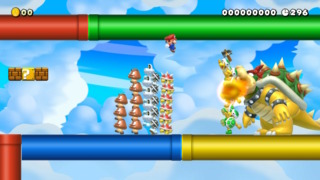
Turn the pointless powerup on its head, and you get another common problem; something I like to call enemy salad. I'm talking about piles of minions meant to gate the player's progress. Not only are these gluts of hazards messy and inelegant, but they're also not the impenetrable barricades that they first look like. When Mario gets hit, he enters a short period of invincibility and can pass through dangers unscathed. So, in an enemy salad, every villain but that first one the player hits becomes superfluous; they don't put any more drag on Mario.
I suspect one of the reasons you see the enemy salad and pointless powerups so much is that amateur designers use them to paper over cracks in the level. Suppose you accidentally give the player a powerup that would let them breeze through a section of your course. In that case, you can nerf their pixelated plumber by firing a mountain of enemies their way, likely stealing back the advantage. And if you've found that a stretch of your level is too punishing for your target audience, a powerup at its threshold mellows the difficulty.
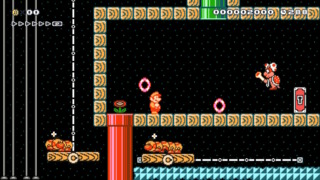
There's a kernel of logic here: You can use enemies and items to finetune a level's difficulty. The problem in these examples is that the designers take these concepts to an extreme. If you have a beat where the player collects a shield and then powers through some enemies to lose it immediately, you might as well not have had the beat at all. The player will come out the other side identically to if the powerup hadn't been there, and so, you've wasted their time. A tiring but explosively popular version of this mistake is having the player fight a boss while spawning powerups for them every few seconds. It's never difficult, just time-consuming.
Better than papering over your cracks is to fix them. If a chamber has too many pits, spikes, or bad guys, remove some or reorient platforms to make Mario less likely to land in the path of danger. If the player is coming in hot to an area and might wreck your best-laid obstacles, consider giving them a lighter powerup beforehand or making them thread their path through the level more carefully. These solutions require more graft than throwing down a handful of enemies or a cheeky boost, but your player will appreciate the effort.
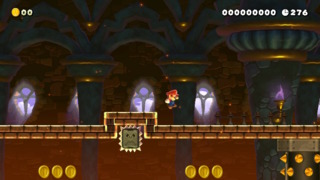
The worst redundancy happens when there are whole sections of levels that the player can bypass. If skipping part of the course is a carefully considered reward, it can work. Perhaps there was an optional powerup that the user fought admirably to win, meaning they deserve to get ahead. Maybe there's a secret tunnel they earned entry to with exceptional observation. But I've seen elaborate mazes that creators evidently spent a lot of time on but that the player can climb over or swim past with no rationale.
If your stage hosts a clearly-signed B road that is significantly quicker and easier than the A road, then the user is likely not to experience your A road, no matter how fine a knife you used to fashion it. If you want to force the player to interact with your work, ensure that the level's flow takes them right through its heart. You can also use locked doors to force players to beat puzzles or enemies to progress or explore other options for a smoother sense of advancement.
Unclear Level Progression
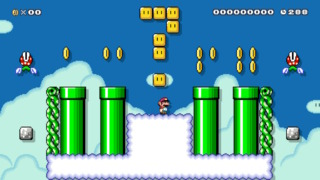
Almost every maker knows that the audience doesn't want to guess the correct door or pipe to win; asking them to fails to test their skills and can punish them, even when there's nothing wrong with their playstyle. But there are more subtle ways that levels leave users playing the guessing game. Sometimes, areas and objects look like the road to progression but won't guide the player any closer to the exit.
Not every ? Block and unexplored gap needs to yield a prize; that would make the player numb to rewards. However, there's a subtle difference between signalling to the player that they'll definitely get closer to the goal through certain efforts and suggesting that maybe they will. You should guarantee that the player can accurately differentiate between those two categories of environmental clues. Otherwise, they cannot make informed decisions about their navigation, and their approach to levels may run counter to your plans. Additionally, players may feel cheated if designers lead them to believe they've unlocked something valuable but don't follow through on that promise. And nothing ticks a player off like taking what appears to be the correct route only to blindly fall into a lava pit or spike trap.
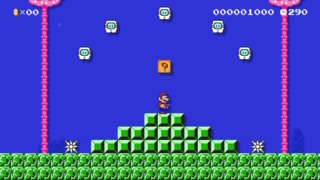
To understand how to avoid this blunder, we need to understand what properties make a level element stand out and signal importance to the player. These properties include the element being:
- Surrounded by negative space.
- Flanked by symmetrical geometry.
- Painted a different colour than surrounding objects.
- Brightly coloured.
- Larger than surrounding objects.
- More animated than surrounding elements.
- On a podium.
- Situated near the centre of the screen.
It is also important to remember that if the shape of the level funnels the player in a particular direction, they will perceive it as the route to the exit. Of course, if we give a level element the opposite properties to those above, the player can easily miss it or dismiss it as unimportant. Those opposite states include the element being:
- Surrounded by a jumble of other elements.
- In a space where the geometry doesn't lead the eye towards it.
- Surrounded by objects of the same colour.
- Dull in colour.
- Surrounded by objects of the same size.
- Surrounded by more animated elements.
- Sitting level with other objects.
- Situated in the corner of the screen.
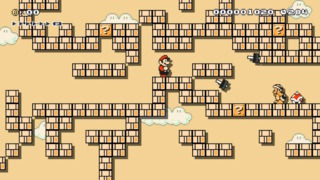
And if there is a possible route that the level does not corral the player into, they will perceive it as a side route. While a general audience will find joy in the occasional observational challenge or subversion of level design, most of the time, you do not want to suggest that bonus elements of your level are essential ones (giving them the characteristics from those first set of bullet points) or that an area or item the player must interact with is actually unimportant (giving them the characteristics from that second set of bullet points).
For example, if you want your player to travel down a particular Warp Pipe, but you make that Pipe the same colour and height as those around it, you can leave the player searching for a needle in a haystack. However, give it a unique colour in the level and have it rise above the other Pipes, and it will scream "goal". Similarly, if there is a boss right in front of a locked door, the player will assume the boss has a Key, so don't stuff that Key in a Brick Block to one side of the screen. The greater the "bonus" you want your element to provide, the more justified you are in downplaying it, as doing so will make players' rewards equal to their efforts in observation and exploration. Unless you're aiming for a hard as nails stage, a Super Mushroom doesn't need to be hidden. However, a 1-Up Mushroom or a Starman would be perfect candidates for sneaking in as subliminally as possible.
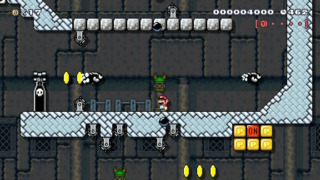
It helps to recall that a player will generally move towards an area that looks like it will lead to the goal, that has enemies they need to dispatch, or that appears as though it has some reward for them. The skilled designer can exploit this instinct by using a breadcrumb trail of elements that coax the player forward, using an invisible hand to tease them through the level. Some designers like to use arrows to channel the player through an area, and they're better than nothing, but they can be condescendingly loud about where to go. Coins can act as a gentle outline of the intended path through an environment but may also come across as hand-holding if used from one end of a level to another. The most subtle of attractors are powerups, enemies, and platforms.
Outside of the clear and obscure level elements, we have those that exist off-screen entirely. Remember that unless the player has seen an entity, they cannot take it into account when beating the stage. And even if they did glance at it in passing, building a mental model of everything off-screen can be taxing. Unless you're composing a level for the most thick-skinned players, you shouldn't have an off-screen platform that the player has to make a blind jump onto unless you've highlighted the path to it unmistakably. You also shouldn't have a Spike Pillar or Thwomp that flies in from off-screen and flattens the player. Once you lose the player's confidence that the environment is explicit about where to go and where not to go, it's hard to claw it back.
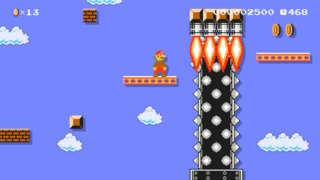
Remember, when you're playing your level, obscure hazards and vague progression cues can fly under your radar. Because you architected the course, you already know where everything is and what you need to do to clear it; your visitors won't. Not everything in a level needs to explain itself the second the player sees it. Your audience will feel smart if they have to make some deductions to overcome challenges. Mystery is particularly appropriate for puzzles, and a little guessing is the basis of surprise for the player. But when your level pivots on confusing the player about basic goals, it's time to make a change.
Boss Overuse
For the designer, the allure of the boss is strong. In mainline Mario, mega-enemies like Bowser are iconic, imposing, and charming. And with them, a maker can use a single element to implement a relatively complex challenge that can keep the player occupied for some time. That's a highly economic exchange of work for productivity. But the bosses were able to make the mark they did on the original Mario games because Nintendo used them sparingly and thought about how they could reinvent them in subsequent encounters.
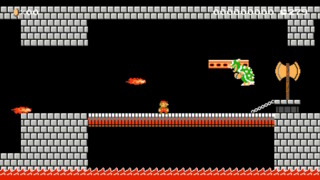
In Super Mario Bros., you only duel with Bowser in every fourth level, and varying platforms and powers change up those fights. Bosses appeared no more frequently as the series progressed, and by Super Mario Bros. 3, there were nine different bosses, eight of them used only once. But spend an evening in Mario Maker's Endless Mode, and a carousel of the same antagonists will keep coming back around. Bosses in Mario Maker are relatively limited in the experiences they can output because they combine many different functions into one element. They exist in contrast to the majority of objects and enemies, which are versatile because of their simplicity.
The Bill Launcher, for example, has very few rules, the main one being that the Launcher will eject what the designer places inside it. Therefore, we can use it to dispense a wide variety of enemies and items. Falling Platforms are easy to understand: they're solid surfaces that descend when Mario steps onto them. So, we can have them drop down into a pit or onto solid ground. We can put an enemy on them, place them far away so that the player needs to make a long jump towards them or higher to squeeze more verticality out of their jumps. We could make them shorter or longer and have them on the main path or leading to an optional route. And here, we've only talked about individual Bill Launchers and Falling Platforms. We can combine these items with each other or different item types in infinite ways.
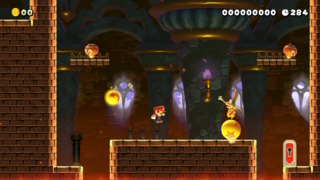
Now, let's take a typical boss like Lemmy. He has a specific movement pattern and casts bouncing balls in the player's direction. Mario can defeat him by jumping on his head three times, but colliding with Lemmy's noggin forces him into a temporarily invulnerable state in which he spins around, trying to spike Mario. All these parts come as a set, so we can't mix and match pieces of Lemmy as we could with the objects in the above paragraph. Lemmy is not versatile; the experiences you can squeeze out of him are limited. You'll notice that the environment usually defines the experience in any one section; diverse environments create diverse experiences. The bosses, however, are typically accommodated by the same blank boxing rings.
If a maker doesn't want to put their audience to sleep, they should think carefully about whether they need to add another boss to the already teeming crowd. Chances are, on the macro level, anything you're aiming to do with a boss, you can do with other parts that will lend your level more uniqueness. Whether you want your player to jump over obstacles, stomp enemy's heads, or follow the rule of three, all are possible outside the domain of bosses. But I know that's not quite the same as having a villainous character in your level.
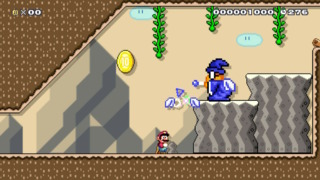
If you want a mini-boss, you may find regular enemies that can fill that role with a little modification. For example, a Lakitu can be a serious thorn in the average player's side, and you can decide which enemies it throws. I've seen a giant flying Kamek used as a teleporting gatekeeper that the player must hit twice to destroy. If you are opening the door to bosses, don't reuse them any more than you have to, and remember that the Koopalings are all just variants of each other; the player can become bored fighting more than one in the same level. I'd also strongly encourage creators to think about how they might use components beyond the boss to give that one boss fight an individual character. Maybe the user must defeat the boss with Bob-Ombs or Koopa Shells. Perhaps they must trick other enemies into hurting the boss or lure the boss into a specific spot.
Few Rewards Outside Victory
To a player, success isn't just clearing the level; they experience many small successes on their trek to the goal in the form of making tough jumps, defeating tricky enemies, and uncovering secret areas. A plurality of players feels that if they keep succeeding in this manner but don't receive explicit rewards, their achievements are going unrecognised. What's more, if the prizes don't vary, your level can come across as one-note. At least, in a stage that takes longer than a few seconds to complete. If the player is likely to get from the starting line to flagpole within thirty seconds, just seeing the "clear" screen is an adequate reward for their playtime. If the level is any longer than that, you'll need to think about putting some more motivation in their tank.
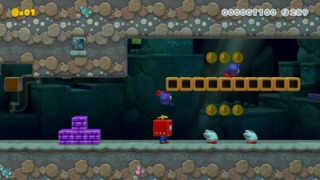
It is common to see powerups act as rewards, and that's a great start. Powerups aren't just an increase in some abstract score, but reward the player through changing the possibility space for them. They're the chance for new interactions with a level. But even they have their limitations. As covered, players may already be holding an equivalent or better powerup than the one you'd like to reward them with. Powerups also only work in specific environmental contexts. It's no use giving your audience a Propeller Hat in a narrow cave or a Super Hammer when there are no bricks nearby. More minimalist levels may not accommodate powerups at all, and that's okay too.
Checkpoints can reward the player with a sense of relief, lifting the pressure of knowing they'll have to replay the level from the start if they die. They're also the designer saying, "this is a landmark point in the level you've reached", which feels pretty satisfying to hear. Another sizeable reward is the 1-Up, which comes in a lot of different forms. 1-Up Mushrooms can be a well-deserved bonus for players who complete troublesome side-tasks but may also be appropriate when you're expecting all players to clear a high bar of difficulty.

More lives don't mean anything to the player accessing your level in isolation. If they're flicking through your level gallery or browsing the "Courses" menus, lives won't persistent between their plays. However, a lot of players find stages through the Endless Mode, where running out of Marios will kill their win streak and force them to start a run over. So, 1-Ups can mean the world to a player if that's how they're tapping into your stage. A player can crash out of the Endless Mode just because of the bad luck of hitting several levels in a row that are sans 1-Ups, and the only way to redress that balance is uploading more courses that take lives into account.
You can package 1-Ups in a variety of different wrappings. Mushrooms are classic, but so is collecting 100 coins, defeating multiple enemies with one shell, jumping off multiple enemies without touching the ground, hitting the top of the flagpole, or winning one from the Mario 3 end-of-level slot machine. You must remember that, as with all rewards, there is a point of diminishing returns. Endless Mode doesn't allow you to throw the player more than three lives in one play. Realising that, some designers make sure that they don't dump more than three 1-Up Mushrooms into their level but forget the other sources of lives that could push the player over the edge. If you have a lot of currency and the chance for a 1-Up at the goal line, think about only including one or two Mushrooms.
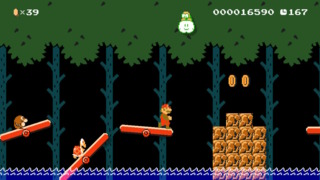
Coins fulfil a particular niche as micro-rewards which can sit between the more prominent pillars. They also feel gratifying to collect, just as there's a tactile joy in hitting the top of the flagpole or sending a shell sailing through some Goombas. This brings me to an overlooked form of reward: you want to include sections pleasing in appearance, sound, and game feel. Mario is full of items and enemies that help with this. Jumping off Goomba's heads, bouncing on trampolines, or dropping down multiple seesaws at a time are just some setups that directly provide sensory rewards.
___
There's a lot more to level design than the tips I've jotted down here, and there are going to be occasions where the rules I've set out deserve to be broken. However, I believe these are constructive guidelines for anyone who wants to frustrate the player less and let them enjoy more. Any creation will be as much a learning process as it is an application of our knowledge, but by sharing knowledge and reflecting on each others' results, we can make that process a little less stressful. Thanks for reading.
Notes
- Super Mario Bros. 1-4 Recreation by DPD4M0 [BHQ-1YG-HJF].